Getting to know the Melandro Valley better
Valle del Melandro takes its name from the river of the same name that runs through it. It has just over half a million inhabitants, and its capital is also the most populated municipality in Basilicata: Potenza has a population of about 68 thousand.
We are in one of the most beautiful and suggestive areas of the southern Apennines. The Valley has a medieval centre that stands on a hill at over 800 metres. It is the second-highest town in Italy, after Enna in Sicily.

Italy's Most Painted Valley project
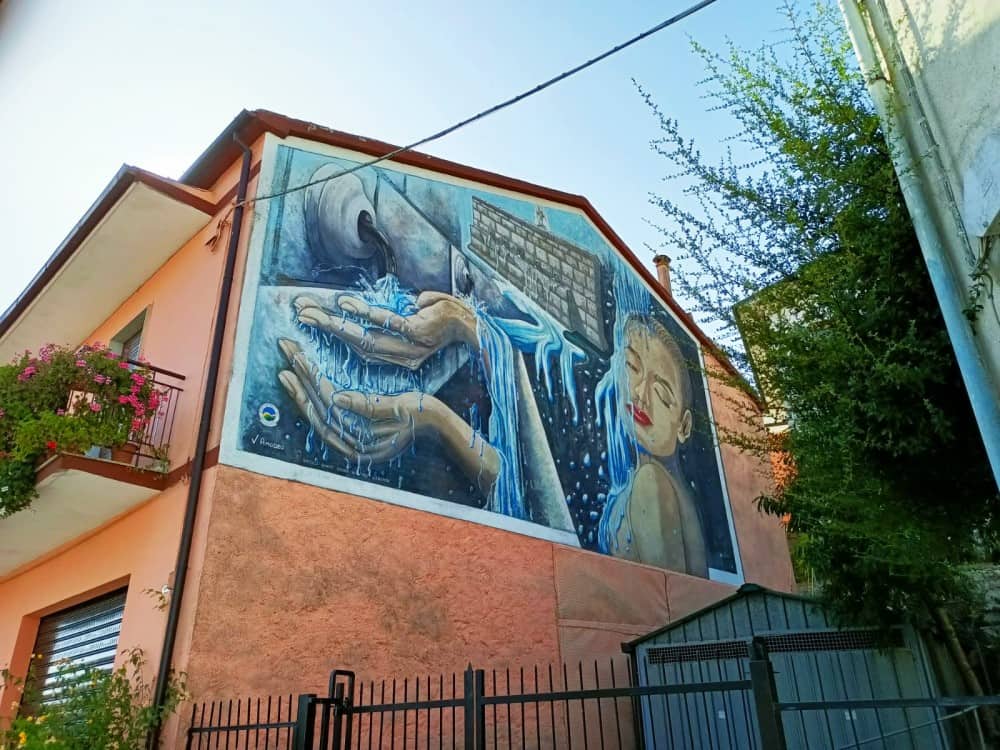
The Melandro Valley has deservedly earned the title of 'Italy's most painted valley' thanks to some villages characterised by the splendid street artworks covering the walls of their houses.
The project started in 1988 on the initiative of the artist Luciano La Torre, president of the cultural art association "Arte per la Valle" (Art for the Valley), who, together with other local artists, began painting murals on the facades of the houses and buildings in the town of Satriano di Lucania. Today, the project involves Satriano and two other municipalities in the valley, Sant'Angelo Le Fratte and Savoia di Lucania, where it is possible to admire over 400 works created over time by various masters.
These murals tell the story, traditions, religiosity and legends of the popular culture of the valley's territory through images. Large-scale works do not create any problems for the urban fabric but rather enhance it. The three villages have become a true cultural centre that is enriched year after year with new works. A unique and original model that has brought the town's streets to life, becoming an act of local tourism promotion that interweaves history with the tradition of these places rich in culture.
Satriano di Lucania: the Street Art Village
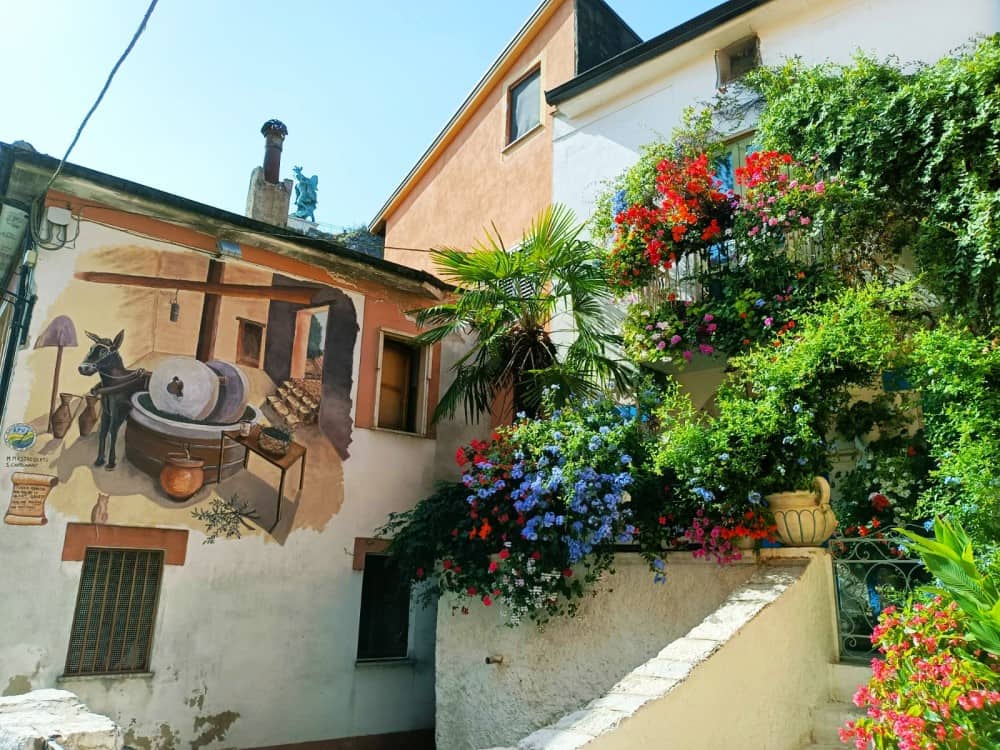
The journey of discovery through Italy's most painted valley can only begin in Satriano di Lucania, where it all began. It is where most of the valley's murals are to be found (around 160 to date), and it is no coincidence that it is known as the Street Art Village.
The large paintings that adorn the walls of the houses deal with various themes: the cult of saints, ancient trades and local legends. Among the best known is the mural dedicated to the half-man, the half-tree figure of Rumita, who, together with the Bear and Lent, represent the three main characters of the famous Satriano Carnival.
The Legend upon Satriano's Tower

The origins of Satriano di Lucania date back to the Bronze Age. Still, all that remains of the ancient fortified town of Satrianum today is the Tower, built by the Normans in the 13th century and perched on a promontory almost a thousand metres above sea level. Tower and the devastating fire that destroyed the town in 1420 are linked to a legend with Queen Giovanna II of Naples as its protagonist.
The legend tells that the queen ordered the town to set fire after being rejected by a nobleman she counted in vain because he was in love with another woman. The latter was locked up in the Tower and later burnt. The man tried to force his way into the Tower by riding through the flames to save her. When he tried to get out, the building collapsed on both of them and killed them. Today, people admit that you can still hear the horse's hooves at midnight and the first light of dawn.
The fire destroyed the village and forced the inhabitants to take refuge in the neighbouring villages of Tito, Sant'Angelo and Pietrafesa. And it was here that the fate of Satriano became linked to that of Pietrafesa, a nearby town that took its name from a cleft in the rock on a nearby hill, and in 1887 Pietrafesa changed its name to Satriano.
What to visit in Satriano di Lucania
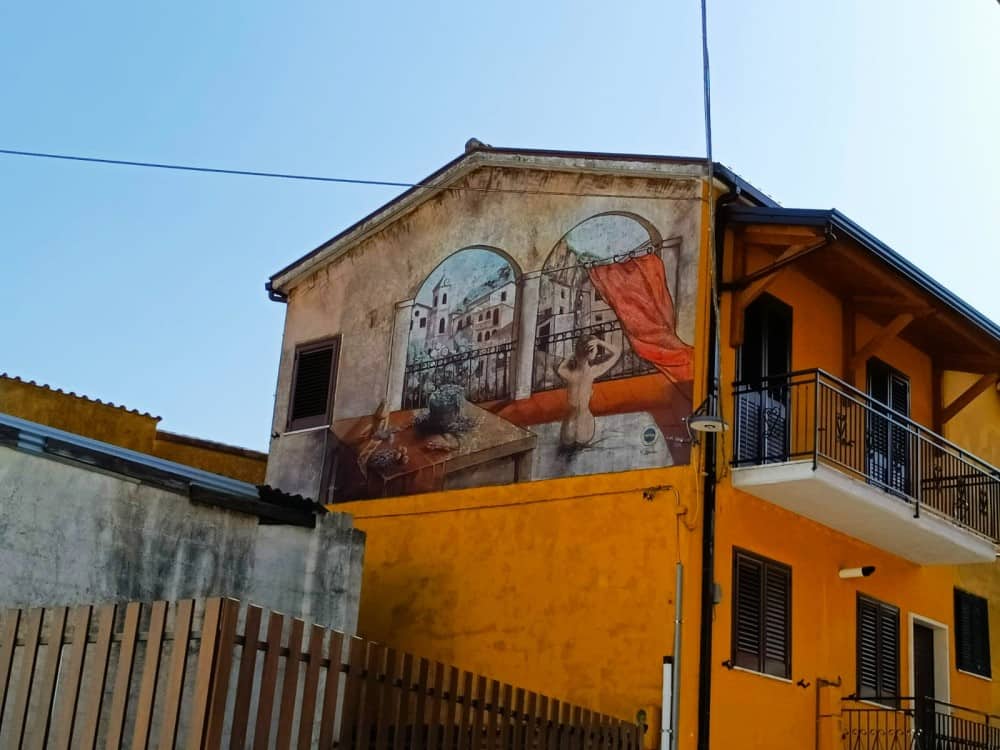
In addition to the murals that decorate the façades of the houses, depicting traditions and scenes of local daily life, in the historical centre of Satriano di Lucania it is possible to admire numerous noble palaces dating from the 17th-18th centuries.
Among the most beautiful sacred buildings are the Mother Church dedicated to St. Peter the Apostle and the Church of the Assumption, whose original nucleus dates back to the 12th-13th centuries. Inside the latter are 17th-century paintings by Pietrafesa, an artist born in this village. The 15th-century Madonna Della Rocca chapel was carved entirely out of the rock, and the San Giovanni chapel, also decorated by Pietrafesa, is worth a visit.
To visit: in the old town centre, the permanent exhibition Satriano le Origini (Satriano's origins), with interesting archaeological finds inside, and the Museo Della Civiltà Contadina (Museum of rural civilisation), which displays original rustic objects and costumes.
Sant'Angelo Le Fratte: the Cellars Village
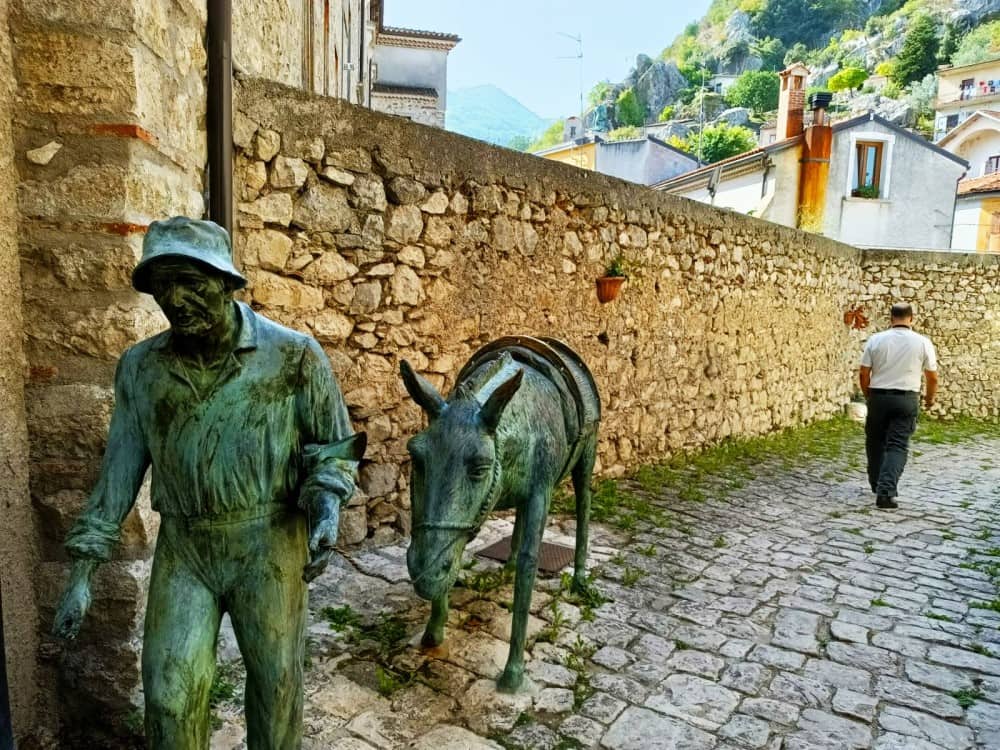
Another village in the valley enriched by the colours and stories told through the images of the murals is Sant'Angelo Le Fratte. The first news about this village, which lies at Mount Carpineto, dates back to the Middle Ages (11th-12th centuries).
Sant'Angelo Le Fratte, besides its murals, is also known as the Village of the Cellars. There are over 100 of them dug directly into the mountain's rock above it. Still today, the cellars are used for the preservation of wines, cheeses and delicious local products.
Every year the wine cellars of Sant'Angelo Le Fratte are the protagonists of Cantine Aperte (Open Cellars). This very successful event heralds the arrival of Ferragosto (the Day of August). Every year, from 12 to 15 August, the town's Pro Loco opens these ancient and characteristic cellars for an evocative food and wine tour that allows visitors to rediscover old flavours and archaic folk traditions while enjoying musical performances and admiring the spectacular nature of the cellars.
Street Art in Sant'Angelo Le Fratte
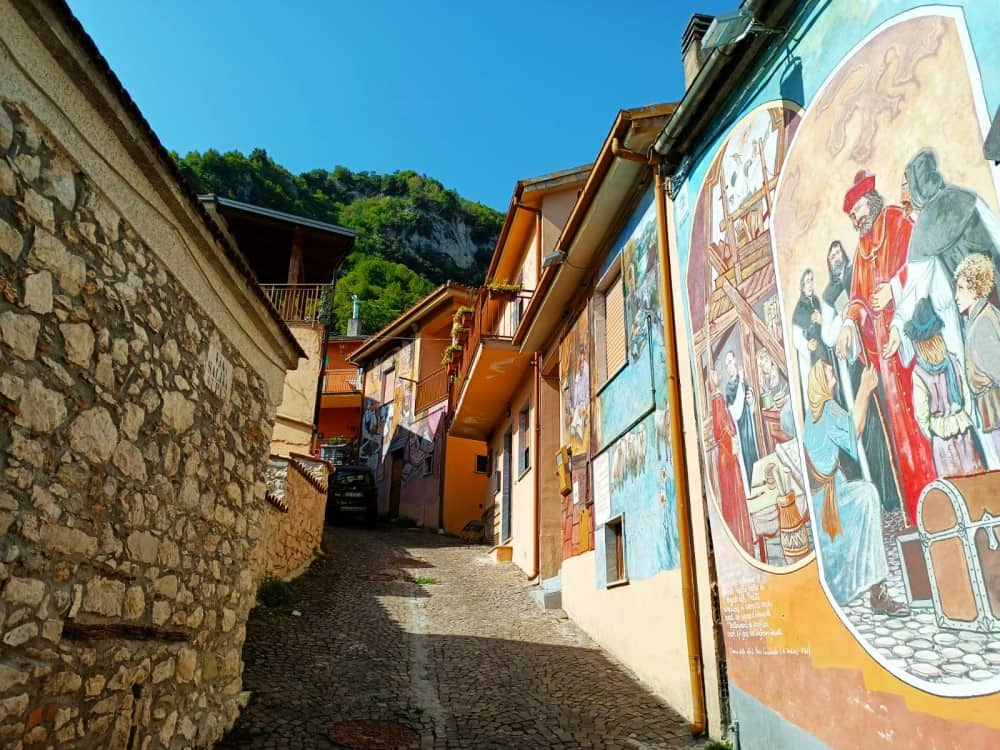
Contrasting with the antiquity of the cellars are the fascinating contemporary art sculptures by artist Pier Francesco Mastroberti and the colourful murals. The murals in Sant'Angelo Le Fratte develop and describe the relationship between man, rock and native life.
Among the most fascinating are those dedicated to the memory of Bishop Juan Caramuel Lobkowitz, who was on an apostolic mission here from 1657 to 1672. In particular, it is advisable to go to Via Capua to view some of the thematic works.
Street Art in Savoia di Lucania

The last stop on this journey in search of colour is the village of Savoia di Lucania, the ancient Salvia. Its murals mainly tell the story of Passannante, the assassin of Umberto I, who was born here. Among the narrow streets of the small village, you will come across colourful figures and history.
Here, work is currently underway on new paintings that will adorn the walls of the buildings in this locality. So a tour in Melandro Valley is a unique opportunity to feel surrounded and immersed in ancient stories that accompany us at every step with its murals.
About the author
Written on 14/10/2021



Ludovica Poliero
With over 400 murals, Melandro is the "most painted valley in Italy". We are in Basilicata, specifically in the province of Potenza, and the municipalities that make it up are Satriano di Lucania, Sant'Angelo Le Fratte and Savoia di Lucania.